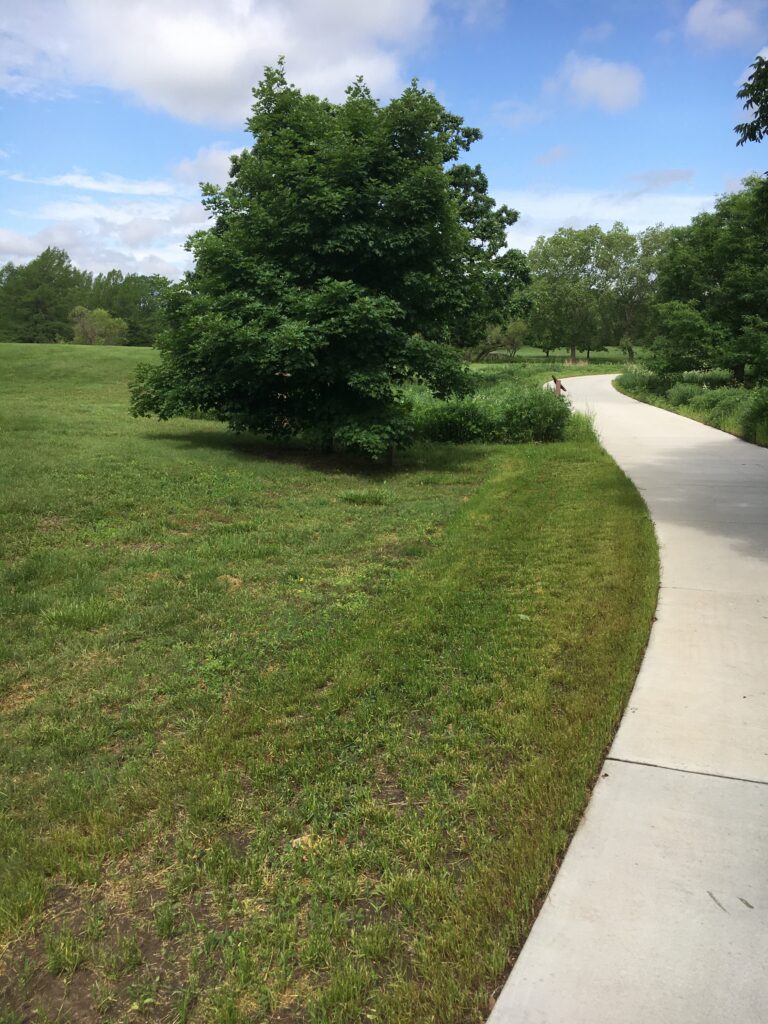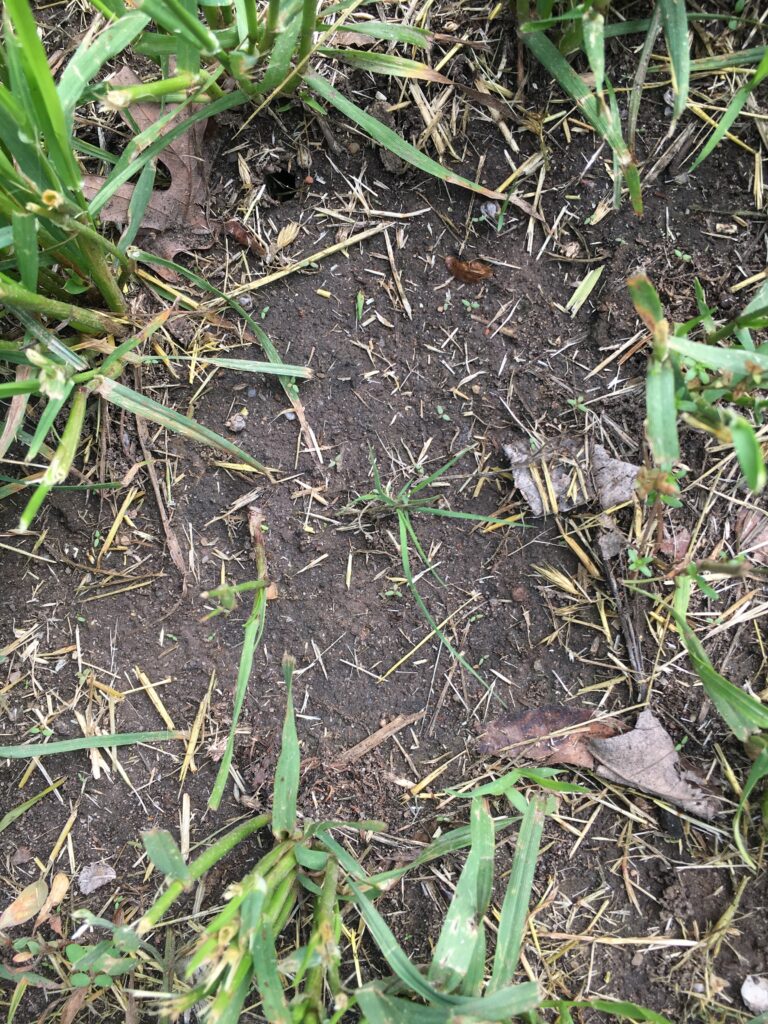Last November, I set out to establish buffalograss a different way than I have traditionally done. Normally, I have areas prepared this time of year for buffalograss seeding. May and June are considered the best time to plant buffalograss because it is a native warm season grass. It needs to be planted when soil temperatures are above 60 degrees.
In South central Kansas, it is recommended that seeding of buffalograss be completed no later than August 15. Later seeding is not very successful because the newly germinated seedlings do not get fully rooted before winter. That has been a good rule of thumb, but requires so much water in the summer to get the seeds to germinate.
With this new approach, one plants the buffalograss seeds along with annual ryegrass in the fall or early winter. In theory, the annual ryegrass, a cool season grass, will germinate and hold the soil through the winter. The buffalograss seeds will work their way into the soil with the natural freeze/thaw of the soil throughout the winter. These seeds will then germinate the following spring on their own with annual rainfall and warm 60 degree soil temperature.


Update
The buffalograss is starting to germinate. I have not irrigated it this spring, which is a huge time and money saver. Over the next few weeks, I will monitor it for dryness. Beneficial and timely rains have allowed the seed to germinate on its own. Essentially, this process mimics the natural seeding process.

We are mowing the annual ryegrass weekly. It is important to keep the canopy open so the sun warms the soil, allowing the buffalograss seeds to continue to germinate. The seeded annual ryegrass will expire on its own as we move into warmer summer temperatures. As the ryegrass dies, the roots continue to hold the soil. Buffalograss will then be able to spread and fill in the area through the rest of the summer.
What I would do differently
- Reduce the seeding rate of the annual ryegrass: It is recommended that you plant 3-4 lbs./1000 sq. ft. I would only seed 2-3 lbs./1000 sq. ft. The seeds will still germinate to hold the soil through the winter, but not be so dense that they shade out the buffalograss seeds in the spring.
- Plant buffalograss seed first and slightly cover it: I had some buffalograss seed float off the soil as I established the annual ryegrass seed last fall.
- Start the process earlier in the fall after the first freeze (October 15): It would have been better to get the annual ryegrass established with slightly warmer temperatures, but not so warm that the buffalograss seed germinates.
I will continue to monitor the progress of the buffalograss planting. For smaller areas this seems to be a viable alternative to the traditional buffalograss planting. There are additional costs with the purchase of the annual ryegrass seed, but you save so much time and water compared to the traditional seeding method. Look for another update on the buffalograss seeding in a couple of months as the buffalograss begins to spread.
